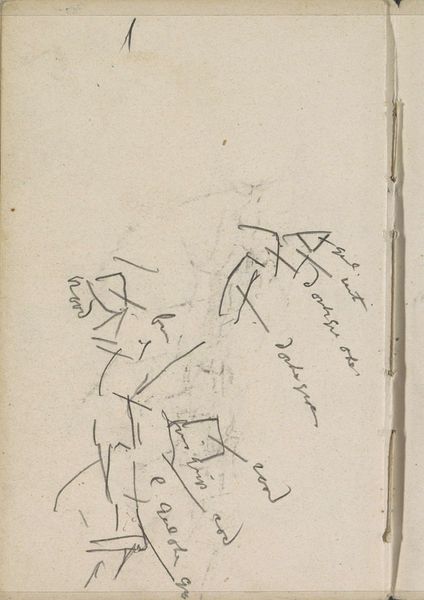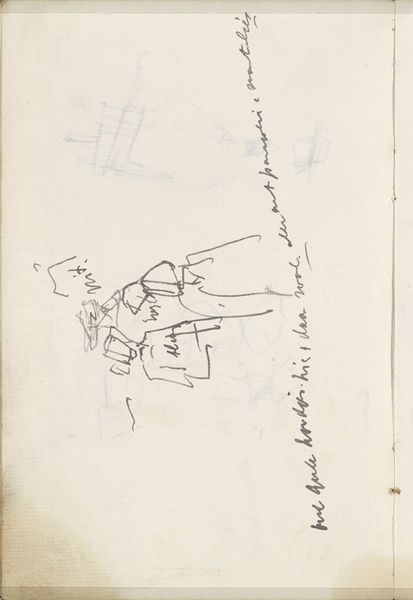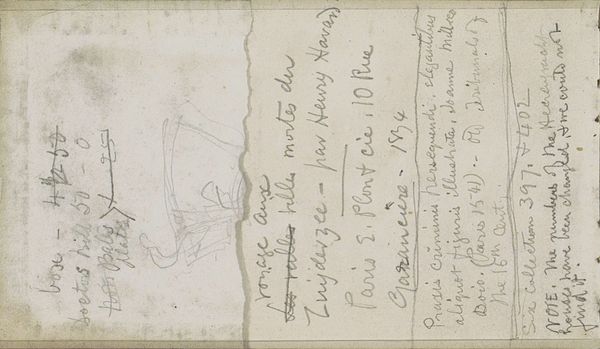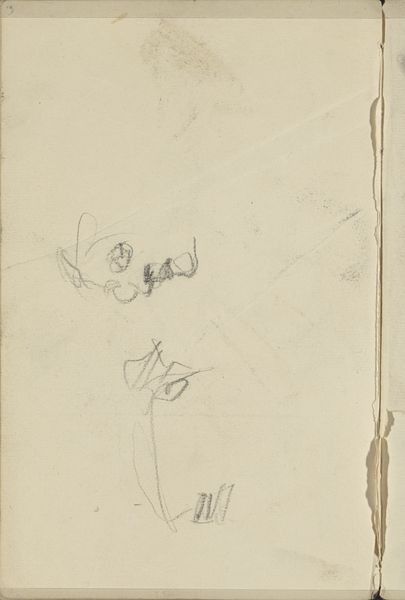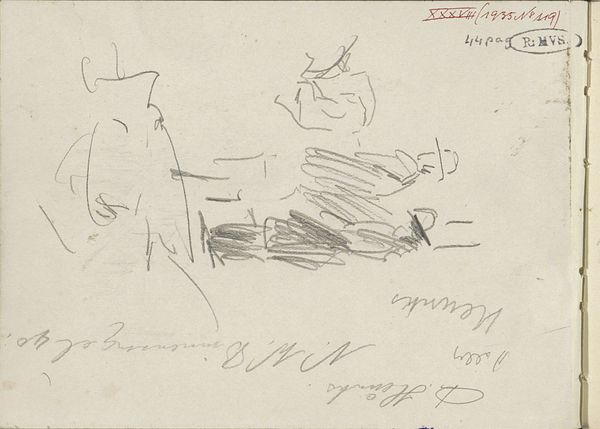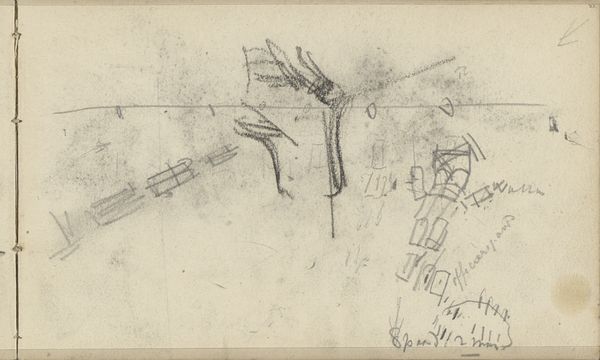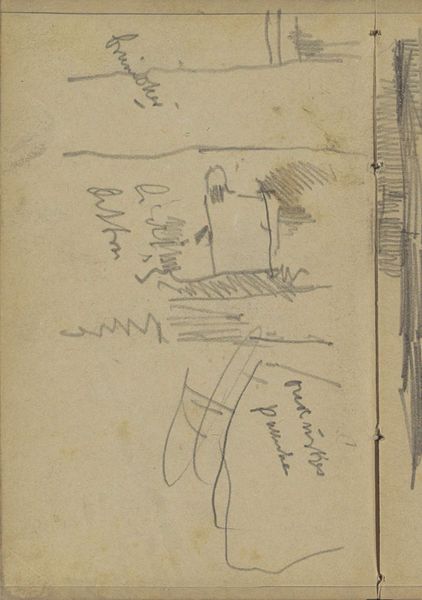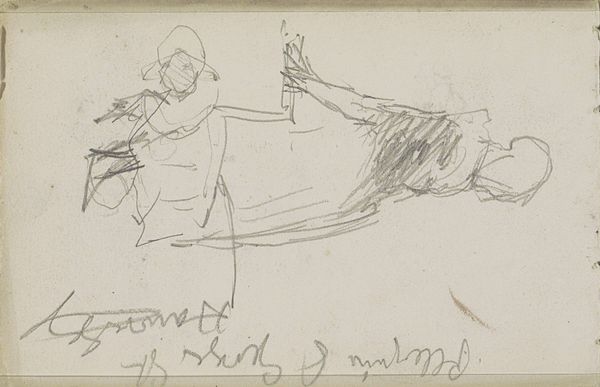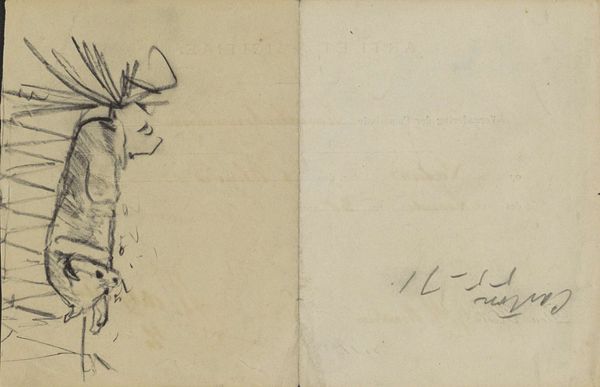
drawing, pencil
#
portrait
#
drawing
#
figuration
#
pencil
#
modernism
Copyright: Rijks Museum: Open Domain
Editor: Here we have Isaac Israels’ “Figure Studies and Annotations,” created between 1875 and 1934, using pencil as a medium. The drawing is currently held at the Rijksmuseum. The marks seem so fleeting, it’s almost as if he captured a gesture more than a concrete form. How do you interpret this work? Curator: The beauty of this piece resides primarily in the syntax of its line and form, doesn’t it? The layering and apparent spontaneity highlight the artist’s process, almost baring the architecture of its creation. Note how the marks oscillate between abstraction and figuration. What does this tension evoke in you? Editor: It feels very immediate. The seemingly random annotations also add a layer of intrigue, suggesting a stream of consciousness captured alongside the visual forms. Are the annotations integrated to the piece in your view? Curator: The textual elements act less as descriptive labels, and more as additional layers of mark-making, contributing to the overall composition's dynamism. They introduce a semiotic element; however, its legibility seems secondary to the overall visual rhythm. Do you agree? Editor: I see what you mean. Their impact lies not in their explicit meaning, but in their visual weight and placement, acting as structural components. The overall arrangement, even in its fragmented state, conveys an energetic quality. Curator: Precisely. The essence isn't tied to deciphering meaning, but appreciating the artwork's formal language, a unique combination of line, form, and annotation. It shows how deconstructing form can, paradoxically, reveal deeper artistic insight. Editor: That gives me a lot to reflect on! I appreciate you pointing out the power of those fragmented lines. Curator: Likewise; your perspectives highlight nuances that might be otherwise overlooked.
Comments
No comments
Be the first to comment and join the conversation on the ultimate creative platform.
